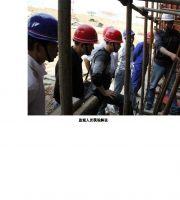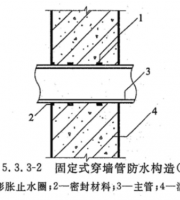The contract text seems to have little difference, but there are essential differences.
The article points out that the Supreme Court held that “the clear obligation to build a project that can perform certain duties (meet certain functions) takes precedence over the obligation to comply with certain plans and specifications, and although the contractor implements the project in accordance with the plans and specifications, it will also be responsible for the failure of the project.
After the completion of the works, the works (or sections, or a part of the works, or a major part of the production equipment) shall be able to meet the intended purpose defined and described in the employer’s requirements (if such purpose is not defined and described in the employer’s requirements, it shall meet their normal purpose) 。 Therefore, the general contractor does not have the problem of construction according to the drawings, because the drawings are designed by him, and the general contractor is designed and constructed in accordance with the “employer’s requirements” and the contract.
On the surface, from general construction contracting to general engineering contracting, only one design content is added.
According to Article 10 of the measures for the administration of general contracting of housing construction and municipal infrastructure projects, “the general engineering contracting unit shall have the engineering design qualification and construction quality appropriate to the project scale at the same time, or a consortium of design units and construction units with corresponding qualifications”, General contracting units in the industry for short need to have dual qualifications.
The basic obligation of the general contractor is to implement the project in accordance with the contract.
Read the article for details.
The employer’s requirements refer to the documents required by the employer included in the contract, as well as any supplements and modifications to this document in accordance with the contract.
Therefore, it is urgent to change the mode of thinking, of which eight aspects are particularly important.
I.
As long as the general contractor carries out the construction according to the standard, he can certainly be exempted from his responsibilities; As long as the general construction contractor carries out construction according to the drawings, he can generally be exempted from responsibility, but if errors are found in the design documents and drawings during the construction process, he can be exempted from responsibility only after timely putting forward comments and suggestions.
The design responsibility in general contracting is essentially different from that in traditional mode.
The unit undertaking the general construction contracting needs to have the general construction contracting qualification.
In other words, even if the general contractor of the project is designed and built according to the standard, it cannot be exempted from its liability for breach of contract.
Rogge Knowles, an expert in international engineering contracts, believes that the obligation to build a building that meets the functional requirements is an unquestionable responsibility that cannot be missed..
change from contracting construction to undertaking most or all of the design and construction.
If the contractor implements in accordance with the standards, but the project fails to achieve the intended purpose after completion, will the general contractor bear the responsibility? In the article “dual obligations in design responsibility – who should be responsible for errors in design standards”, Yang Xiaopeng published a case of general contract for design and construction.
The basic obligation of sub clause 4.1 [Contractor’s obligations] of the 2017 edition of the “yellow book” general conditions to the contractor is: “the Contractor shall implement the works in accordance with the contract.
FIDIC recommends that the owner clearly define and describe the “purpose” to be achieved after the completion of the project.
“Employer’s requirements” specifies the purpose, scope, design, technical standards and functional requirements of the project.
Judging whether the designer is at fault mainly depends on the designer’s reasonable skills and prudence in the design.
Upon completion, the works shall meet the intended purpose defined and described in the employer’s requirements.
The basic obligation of the general contractor is to construct according to drawings and standards, According to Article 28 of the regulations on the quality management of construction projects, “the construction unit must construct in accordance with the engineering design drawings and construction technical standards, and shall not modify the engineering design without authorization, and shall not cut corners.
As long as the designer carries out the design with reasonable skill and care, even if it fails to achieve the expected purpose and has the expected function, it does not need to bear responsibility.
If the construction unit finds errors in the design documents and drawings during the construction process, it shall put forward opinions and suggestions in a timely manner”.
The general contractor shall implement in accordance with the standards and specifications.
If there is no corresponding definition and description in the owner’s requirements, it should comply with the normal purpose of the project.
For errors, omissions, ambiguities, contradictions, inadequacies or other defects in the Contractor’s design documents, regardless of whether the contractor has been approved in accordance with this paragraph, the Contractor shall correct the defects and engineering problems caused by the above problems at its own expense.
3、 From taking construction risks to taking design and construction risks, the general construction contractor only takes construction responsibility risks; The general contractor of the project should bear not only the construction responsibility risk, but also the design responsibility risk.
EPC is not a simple addition of design + construction, but a chemical reaction.
Change from construction according to drawings and standards to design and build according to the employer’s requirements and the contract and meet the expected purpose.
The scope of general construction contracting is only construction tasks, but also includes equipment and material procurement, but does not undertake design tasks.
In the traditional design contract, the designer’s responsibility for the design is negligence responsibility, or fault responsibility, which is called “due diligence responsibility” and “responsibility for misconduct” in the industry.
After completing the project, it must first meet the expected purpose or use function requirements of the project and be responsible for the final product, which is also the fundamental difference from the general contractor of the construction.
If the general contracting mode of thinking is used to undertake the general contracting business, it is the biggest risk.
General engineering contracting not only contracts construction tasks, but also contracts most or all of the design tasks of the project, and is often responsible for equipment and material procurement.
It cannot obtain additional payment for modifying the project to meet the specified functions.” The judgment logic of the court is that the obligation to meet the use function requirements takes precedence over the obligation to comply with certain standards, although the contractor implements the project in accordance with the standards and there is no fault.
This is a new trading mode, and there are new risks.
II.
There are no drawings and specifications in FIDIC’s bidding documents on DB, but there are “employer’s requirements” contract documents.




